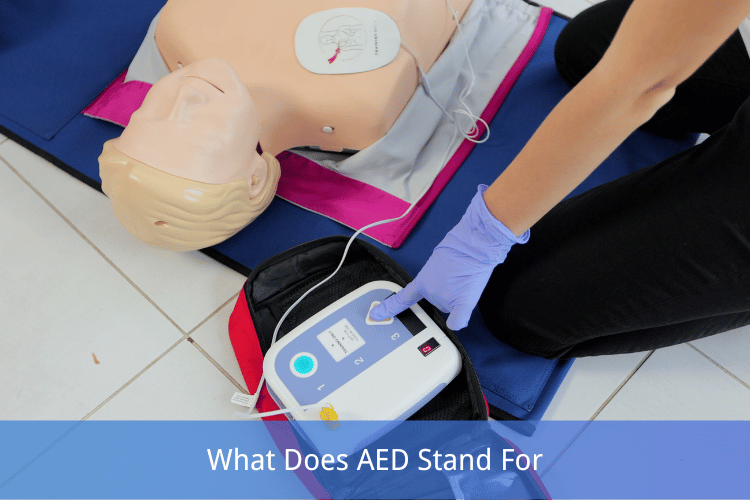
Automated External Defibrillators (AEDs) are life-saving devices in public spaces, workplaces, and healthcare facilities. While many people recognize the term "AED," not everyone understands what it stands for or how it works. For someone experiencing sudden cardiac arrest (SCA), an AED can mean the difference between life and death.
If you've ever walked through an airport, school, or gym, you’ve likely seen an AED mounted on a wall. These compact, user-friendly devices are designed for emergency use, even by those without medical training. But what exactly does "AED" stand for, and how does it function in critical moments?
Let’s examine the meaning of an AED, how it works, and why it’s an essential tool in emergency response.
What Is an AED and How Does It Work?
The Basics of Automated External Defibrillators
An Automated External Defibrillator (AED) is a portable medical device designed to help people experiencing sudden cardiac arrest (SCA). SCA is a life-threatening emergency where the heart suddenly stops beating properly, disrupting blood flow to the brain and other vital organs. Without immediate intervention, SCA can result in death within minutes.
The primary purpose of an AED is to detect abnormal heart rhythms and, if necessary, deliver an electric shock to restore a normal rhythm. AEDs are critical tools in emergencies, especially in public places like airports, schools, or sports facilities where medical professionals may not be immediately available. Thanks to clear audio and visual instructions, they are designed to be easy to use, even for individuals with no medical training.
These devices are compact and battery-operated, often housed in a protective case. They usually come equipped with adhesive electrode pads applied to the chest of the person in distress. The accessibility and simplicity of AEDs have made them a vital addition to first aid resources worldwide.
How AEDs Analyze Heart Rhythms and Deliver Shocks
AEDs operate using advanced technology to assess heart activity and deliver treatment appropriately. The process typically involves three crucial steps:
-
Analyzing Heart Rhythms Once the electrode pads are applied to the person's bare chest, the AED begins to monitor the heart's electrical activity. It uses built-in sensors to detect abnormalities like ventricular fibrillation (VF) or pulseless ventricular tachycardia (VT). These irregular heart rhythms are the most common causes of sudden cardiac arrest.
The device uses an algorithm to analyze the heart's rhythm and determine whether a shock is necessary. Modern AEDs are programmed only to allow the shock if they detect a rhythm that can be treated with defibrillation. If the heart is not in a shockable rhythm, the AED will instruct the user to perform CPR instead.
-
Preparing to Deliver a Shock If a shockable rhythm is detected, the AED charges itself to deliver the appropriate energy level. Most modern AEDs automatically calculate the energy level based on factors like the detected rhythm and device settings. The user is then prompted, often with a voice command, to ensure no one touches the patient to prevent accidental harm during the shock delivery.
-
Administering the Shock After ensuring the area around the person is clear, the AED prompts the user to press the shock button. Some AED models are fully automatic and deliver the shock without requiring the user to take additional action. The electric shock delivered by the AED temporarily stops all electrical activity in the heart, giving it a chance to reset and resume a normal rhythm.
AEDs are designed to analyze the heart's rhythm repeatedly. If the first shock does not restore a normal rhythm, the device will recommend further shocks or alternative actions, like continuing CPR. Users should always follow the AED's instructions, which guide them step by step through the process.
Automated External Defibrillators have revolutionized emergency cardiac care by combining sophisticated technology with user-friendly operation. Their ability to quickly identify life-threatening arrhythmias and deliver treatment on the spot makes them crucial for improving survival rates in cases of sudden cardiac arrest.
Why AEDs Are Crucial in Cardiac Emergencies?
The Role of AEDs in Sudden Cardiac Arrest
An automated external defibrillator (AED) can mean the difference between life and death in the event of sudden cardiac arrest (SCA). SCA occurs when the heart’s electrical system malfunctions, leading to an abnormal rhythm or stopping the heart entirely. This condition is different from a heart attack, which typically involves a blockage in blood flow but does not always disrupt the heart’s rhythm.
AEDs play a vital role in addressing SCA. These portable devices are designed to analyze the heart's rhythm and deliver a shock, if necessary, to restore a normal rhythm. The process, known as defibrillation, is essential for reviving the heart and stabilizing the individual. Time is of the essence in such emergencies, as each minute without defibrillation decreases the chance of survival by about 7–10%. That’s why AEDs are strategically placed in public areas, workplaces, schools, and sports facilities to ensure they’re readily accessible.
AEDs' simplicity and user-friendliness make them powerful tools for bystanders. The devices provide clear, step-by-step audio or visual instructions, guiding even untrained individuals through saving a life. They are designed to detect whether a shock is necessary, ensuring they’re safe to use without medical knowledge.
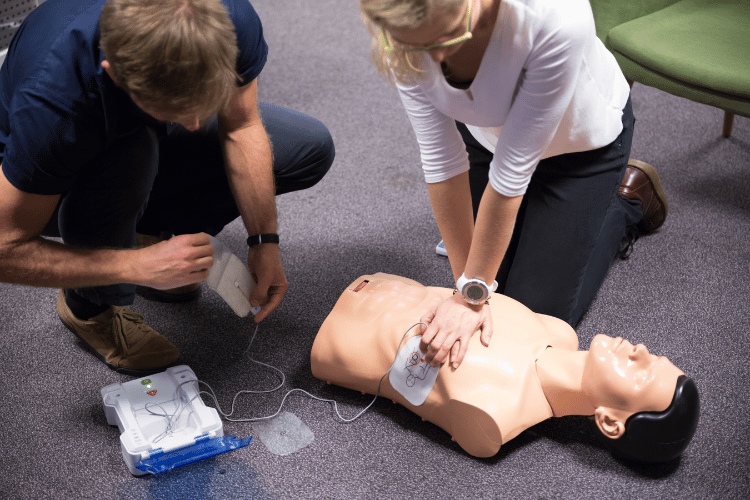
Why AEDs Are Crucial in Cardiac Emergencies
Statistics on AED Effectiveness in Saving Lives
Compelling statistics back up the effectiveness of AEDs in improving survival rates from SCA. Without defibrillation, the survival rate for SCA outside a hospital setting is typically less than 10%. However, when an AED is used within the first few minutes of collapse, survival rates can jump to more than 50% and, in some cases, as high as 70%. This stark difference emphasizes the importance of easy access to AEDs.
Public access defibrillation (PAD) programs, which place AEDs in accessible locations and train the public on their use, have been linked to significant declines in cardiac arrest fatalities. For instance, a study reviewing airport AED programs reported survival rates as high as 64% when AEDs were used promptly. Similarly, communities with well-established PAD programs have been found to double or even triple their survival rates for out-of-hospital cardiac arrests.
Further evidence showcases AEDs’ potential in high-risk environments. For example, sports facilities often report remarkable outcomes when AEDs are present, as cardiac arrests during physical activity demand an immediate response. Survival rates under these circumstances are consistently higher when onsite AEDs are available and used effectively.
Why Accessibility and Awareness Matter?
AEDs' lifesaving potential can only be realized if they’re accessible and people are aware of how to use them. Many communities are working to improve AED availability, with some placing them in locations such as schools, gyms, malls, and public transportation hubs. However, gaps still exist, particularly in rural or underserved areas, where access remains limited.
Awareness campaigns and training programs are critical to bridging these gaps. While AEDs are straightforward, public confidence in using them improves significantly with brief hands-on training, often held alongside CPR instruction. Increased familiarity with these devices empowers bystanders to take action during emergencies, potentially saving countless lives.
Reliable research and real-world incidents affirm that immediate defibrillation saves lives. AEDs are more than just medical devices; they empower ordinary people to act decisively in the most critical moments. Promoting their presence and educating the public could save countless lives every year.
When to Use an AED: Key Scenarios?
Cardiac Arrest with No Pulse
Cardiac arrest often occurs when the heart's electrical system malfunctions, causing it to stop beating effectively. This leads to the absence of a pulse and cuts blood flow to vital organs. Using an Automated External Defibrillator (AED) can significantly increase the chance of survival in such cases.
An AED is designed to detect abnormal heart rhythms, such as ventricular fibrillation or pulseless ventricular tachycardia, which cause cardiac arrest. The AED helps the heart re-establish a normal rhythm by delivering a controlled electrical shock. If an individual collapses, is unresponsive, and has no detectable pulse, an AED should be used immediately after calling emergency services. Time is critical, as the survival rate decreases dramatically with each passing minute.
When using an AED, ensure the person is on a firm, dry surface. Follow the device's voice prompts to check the person's heart rhythm and deliver the shock if advised. You should also perform CPR between shocks to maintain blood flow until emergency medical services arrive.
Drowning Incidents Leading to Cardiac Arrest
Drowning deprives the body of oxygen, which can sometimes lead to cardiac arrest. Rapid action is essential if someone has been submerged in water and is found unresponsive without a pulse or breathing. After removing the person from the water, check for responsiveness and breathing. CPR and AED use are necessary if there is no pulse or breathing.
Before applying an AED, ensure that the individual's chest is dry. Water conducts electricity, and a wet chest can impair the effectiveness of the shock and create a safety hazard. AED pads should be placed on dry skin per the device's guidance. Administer CPR until the AED analyzes the heart rhythm and follow the prompts to deliver a shock if advised. Quick intervention in such cases can restore a normal heart rhythm and prevent severe organ damage caused by oxygen deprivation.
Severe Electric Shock Cases
Severe electric shock can disrupt the heart's electrical activity, leading to dangerous arrhythmias or cardiac arrest. Incidents involving high-voltage exposure, faulty wiring, or lightning strikes are common culprits. If someone collapses after an electric shock and has no pulse, using an AED can help restore normal heart function.
Before using the AED, prioritize safety. Ensure the area is free from any electrical hazards to avoid further injury. Once the environment is safe, check the person’s breathing and pulse. If there’s no pulse, apply the AED and follow its instructions. A defibrillator can correct abnormal rhythms, but it must be used alongside CPR to enhance circulation until professional help arrives.
Unconsciousness with Breathing Difficulty
Some cases of unconsciousness may involve irregular heart activity paired with difficulty breathing, which can lead to cardiac arrest if untreated. This includes conditions stemming from severe allergic reactions, trauma, or other medical emergencies. If a person is unconscious, not breathing adequately, and you cannot detect a pulse, an AED should be used alongside CPR.
When using the AED, listen carefully to its instructions. If the device detects a shockable rhythm, deliver the shock and resume CPR. If the AED does not advise a shock, continue performing chest compressions and rescue breathing until emergency responders take over. Paying close attention to the individual’s breathing and pulse during this process can guide your actions and improve their chances of recovery.
Effective use of an AED in these scenarios requires prompt decision-making and some familiarity with the device. Many AEDs are equipped with clear instructions, making them accessible even to those without extensive training. By acting quickly in emergencies, you can potentially save lives.
When Not to Use an AED: Important Precautions?
An Automated External Defibrillator (AED) is a life-saving device to restore a regular heart rhythm during sudden cardiac arrest. While AEDs are highly effective and user-friendly, understanding when not to use one is just as critical as knowing how to operate one. Misusing an AED in certain situations can harm the individual or those assisting, or be ineffective. Below, we break down key scenarios when deploying an AED is inappropriate.
Conscious and Breathing Individuals
An AED is specifically intended for individuals who are unresponsive, not breathing, and showing no signs of circulation. If someone is conscious, speaking, or breathing normally, their heart is likely functioning adequately, and an AED is not required.
Using an AED on a person who does not need it can lead to unnecessary harm or complications. Instead, monitor conscious individuals closely and provide other necessary first aid or seek medical assistance if their condition worsens. Be sure to confirm the state of awareness and breathing before proceeding with AED use.
Wet or Waterlogged Environments
AEDs deliver an electrical shock to the heart, which can be dangerous in wet conditions. Water conducts electricity, increasing the risk of harming the rescuer or bystanders. The shock may also be ineffective if the individual's chest is wet.
If the individual is wet or in a waterlogged area, such as a pool or rain-soaked environment, move them to a dry location if it’s safe. Before applying AED pads, thoroughly dry the person’s chest with any available material, such as a towel or clothing. Always ensure the immediate area is dry to minimize risks to everyone involved.
Presence of Flammable Substances
AEDs produce sparks during operation, making them hazardous in environments with flammable gases, liquids, or materials. Examples include areas where oxygen tanks, gasoline, or solvents are present. The electrical discharge from an AED can ignite flammable substances, posing serious risks to the individual and rescuers.
If an AED is needed in an area containing flammable materials, quickly and safely move the person to a safer location away from the hazard before using the device. Removing the danger ensures the AED can be employed without creating additional risks.
Traumatic Cardiac Arrest
Traumatic cardiac arrest occurs as a result of severe external injuries, such as blunt force trauma, gunshot wounds, or car accidents. Unlike sudden cardiac arrest caused by electrical malfunctions in the heart, traumatic cardiac arrest often results from significant blood loss, organ damage, or airway obstruction. Because these conditions prevent the heart from effectively pumping blood, administering an AED shock is unlikely to help.
For individuals experiencing traumatic cardiac arrest, performing cardiopulmonary resuscitation (CPR) and addressing their injuries, such as controlling bleeding or ensuring an open airway, should take precedence. Emergency medical services must be contacted immediately, as specialized care is essential in these cases.
Do-Not-Resuscitate (DNR) Orders
A Do-Not-Resuscitate (DNR) order is a legal document that explicitly states a person's wish not to undergo resuscitation efforts, including CPR or defibrillation, in the event of a cardiac arrest. Using an AED on someone with a valid DNR order violates their expressed wishes and could have legal implications.
If a DNR order is present or suspected, confirm its validity by looking for proper documentation, such as a bracelet or medical records. Respecting the individual’s wishes is essential, even in a high-pressure emergency. If in doubt, contact legal or medical professionals for guidance.
Understanding when not to use an AED helps ensure its safe and appropriate application. An AED can save lives, but misusing it in the abovementioned situations can lead to further harm or damage. By recognizing these scenarios and taking the necessary precautions, you can provide more effective and responsible aid during emergencies. Always prioritize thoroughly assessing the individual and their environment before deploying this life-saving tool.
Step-by-Step Guide to Using an AED Safely
Automated External Defibrillators (AEDs) are lifesaving devices designed to help restart a person’s heart during sudden cardiac arrest (SCA). However, using an AED effectively requires a clear understanding of the steps involved to prevent unnecessary delays or errors. Below is an in-depth, step-by-step guide covering three critical aspects of AED use.
Preparing the Patient for AED Use
Proper preparation is paramount when responding to a cardiac emergency. Follow these steps to ensure the patient is ready for the AED:
-
Assess the Situation Ensure the scene is safe for both yourself and the patient. Look for hazards like exposed wires, water, or traffic. Once secure, check the patient for responsiveness by tapping their shoulders and shouting.
-
Call for Help If the patient is unresponsive, not breathing, or only gasping, immediately call emergency services (e.g., 911). If others are nearby, assign someone to retrieve the AED while you continue basic life support steps.
-
Initiate CPR Begin chest compressions immediately to keep blood flowing to vital organs until the AED arrives. Push hard and fast at 100–120 compressions per minute.
-
Expose the Patient’s Chest Once the AED is ready, carefully expose the patient’s chest by removing or cutting away clothing. If necessary, wipe away sweat or water to ensure the skin is dry. For women, remove undergarments that obstruct access to the chest.
Placing the Pads Correctly
AED pads are vital for effectively delivering the shock. Proper placement is crucial to ensure the electrical impulse travels through the heart.
-
Identify Pad Placement Sites Read the diagrams or labels on the AED pads. Most adult AEDs have two pads that must be placed in specific areas for maximum efficiency.
- Place one pad on the upper right of the patient’s bare chest below the collarbone.
- Place the second pad on the lower left side of the patient’s chest, a few inches below the armpit.
-
Avoid Obstructions Ensure no jewelry, medical patches (like a nitroglycerin patch), or pacemaker devices are under or near the pads. If a pacemaker is present, place the pads slightly away from it, but still follow the general positioning guidelines.
-
Consider Special Circumstances If the patient is wet, dry their skin before attaching the pads. If there’s excessive chest hair, quickly shave or remove it using the tools included in the AED kit. For children, use pediatric pads if available; if not, place the adult pads as described, but ensure they do not overlap.
Following AED Prompts for Shock Delivery
Once the AED pads are placed, the device takes over and guides the rescuer through the following steps. Following these prompts correctly is key to delivering timely aid.
-
Stand Clear During Analysis Turn on the AED and follow the prompts. The device will analyze the patient’s heart rhythm to determine whether a shock is necessary. Ensure everyone, including yourself, is clear of the patient to avoid interruption or injury.
-
Deliver the Shock if Advised If the AED determines that a shock is required, the device will instruct you to press a button to deliver it. Before doing so, double-check that no one touches the patient and announce loudly, “Stand clear!” Press the button firmly as instructed.
-
Resume CPR Immediately After Shock Once the shock is delivered, or if no shock is advised, resume chest compressions and follow AED prompts. Continue this cycle of CPR and AED use until medical professionals arrive or the patient begins to move and breathe.
-
Monitor for Additional Prompts Stay attentive. The AED will continue to monitor the patient’s heart rhythm and provide further instructions if necessary. Always prioritize following the AED’s prompts.
By carefully preparing the patient, placing the pads correctly, and adhering to the AED’s guidance, you can significantly increase the likelihood of saving a life. Practicing and familiarizing yourself with these steps is critical, as every second counts during cardiac emergencies. Remember to stay calm and act decisively to make a difference.
Common Mistakes to Avoid When Using an AED
Automated External Defibrillators (AEDs) are life-saving devices used during sudden cardiac arrest (SCA). Even without medical training, their design allows individuals to deliver a shock that can restore the heart's normal rhythm. However, despite their simplicity, several common mistakes can reduce their effectiveness or even put lives at risk. Below, we’ll explore three crucial errors to avoid when using an AED to ensure optimal outcomes in an emergency.
Using AEDs on Wet Surfaces
Understanding Why This is a Concern
One of the most overlooked issues with AED use is the presence of water, whether on the victim’s body or in the surrounding environment. AEDs rely on delivering an electrical shock, which can behave unpredictably when water is involved. Water acts as a conductor, potentially diverting the electrical current away from the heart or, even worse, causing harm to others nearby.
Practical Steps to Avoid This Mistake
Before applying the AED pads, check if the person is wet. This often happens if the victim collapses near a pool, in the rain, or after strenuous activity where they’ve been sweating heavily. Here’s what you should do:
- Dry the Chest Thoroughly: Use a towel, clothing, or anything absorbent to dry the person’s chest where the pads will be attached. The skin must be free of water to ensure a proper connection.
- Move to a Dry Surface: If possible, shift the victim to a dry area. Avoid standing water or wet grounds that compromise the AED’s function and endanger rescuers.
Taking these precautions ensures the electrical shock reaches the heart with maximum efficiency while maintaining safety for everyone involved.
A Real-World Example
Imagine a swimming pool incident in which someone collapses. Without properly drying the person’s chest or moving them from the poolside, electrical current can spread through the wet surface. This scenario demonstrates why attention to wet conditions is vital before using an AED.
Placing Pads Over Pacemakers or Medication Patches
Importance of Proper Pad Placement
AED pads are designed to deliver an electrical shock to restart the heart, but incorrect placement significantly hinders device effectiveness. One critical mistake is placing the pads over a pacemaker or medication patches.
- Pacemakers are small devices implanted under the skin, typically on a person’s upper chest, to regulate heart rhythm. Placing the AED pads directly over a pacemaker can disrupt its function and reduce the shock's efficacy.
- Medication patches, such as those delivering nicotine or nitroglycerin, can interfere with electrical conductivity and even cause burns during defibrillation.
How to Identify Pacemakers and Medication Patches
To avoid these placement errors, scrutinize the chest area:
- Look for a bulge under the skin, typically near the upper chest, which may indicate a pacemaker.
- Check for medication patches on the chest, shoulders, or arms, and safely remove them before attaching the AED pads.
Correct Placement Techniques
If you locate a pacemaker, never place the AED pad directly over it. Instead, position the pad slightly to the side while maintaining proper placement guidelines (one pad on the upper right chest, the other on the lower left side of the ribcage). Remove any patches found on the skin and wipe the area clean to avoid chemical interference or burns.
A Reminder to Stay Calm and Observant
The presence of pacemakers or patches is not a reason to delay AED use but rather a call to be more observant. Proper preparation can make the difference between success and complications during defibrillation.
Delaying AED Use in Emergencies
Why Delays Are Dangerous
Time is critical in sudden cardiac arrest. Studies show that for every minute defibrillation is delayed, survival rates drop by roughly 7-10%. Quickly using an AED gives the victim the best chance of survival, yet delays still happen for various reasons, such as hesitation, uncertainty, or unpreparedness.
Common Causes of Delays
- Fear of Using the AED: Many bystanders worry they’ll harm the victim or misuse the device. AEDs are designed for simplicity, providing voice prompts and step-by-step instructions to guide users. Fear and hesitation are often unfounded and can waste precious time.
- Waiting for Professionals: Some people mistakenly assume it’s best to wait for medical professionals to arrive. When emergency responders reach the scene, it’s often too late. AEDs are intended for use immediately after cardiac arrest occurs.
Tips for Quick and Effective AED Deployment
- Act Immediately: After confirming cardiac arrest symptoms (unresponsiveness and lack of normal breathing), retrieve and use the AED immediately while sending someone to call 911.
- Familiarize Yourself with AEDs in Advance: Many public spaces, like airports and schools, have AEDs available. Familiarizing yourself with their location and general operation can help you act swiftly in an emergency.
- Trust the AED: The device will only deliver a shock if it detects that one is needed. This means there’s little risk of causing harm, so follow the AED’s prompts without hesitation.
The Consequences of Delay
A 2019 study revealed that survival rates among cardiac arrest victims decrease dramatically after the first three minutes without intervention. This statistic underscores the importance of acting quickly and confidently when an AED is available.
Wrapping Up
Knowing how to avoid common mistakes when using an AED can make all the difference in a life-or-death situation. Always check for wet surfaces, be cautious of pacemakers and medication patches, and act swiftly without hesitation. AEDs are potent tools, but only when used correctly and promptly.
The next time you’re faced with an emergency, remember these simple guidelines to improve outcomes and possibly save a life. Consider enrolling in local CPR and AED certification courses for additional resources or training for hands-on experience.
The Importance of AED Training and Certification
Every second counts during a cardiac emergency. Automated External Defibrillators (AEDs) offer quick and effective intervention, significantly increasing the odds of survival when used correctly. However, the effectiveness of an AED depends on the knowledge and confidence of the person using it. This is where AED training and certification come into play. By learning how to use this life-saving device and getting certified, you equip yourself to act decisively in critical moments.
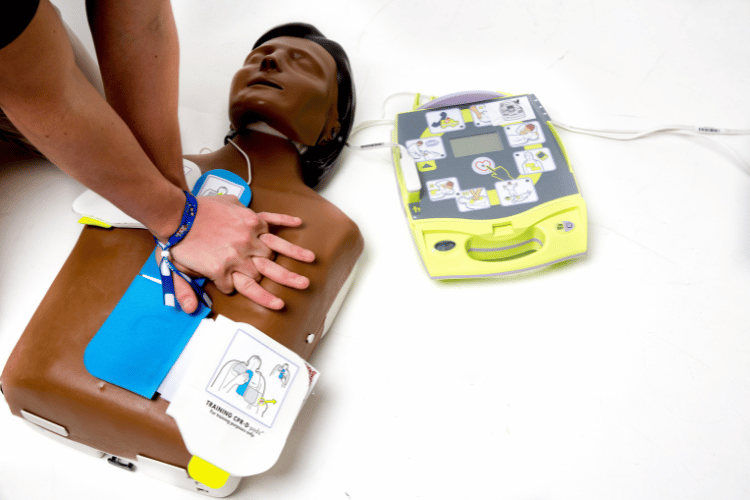
AED Training and Certification
Benefits of Learning AED Usage
Empowering Individuals to Take Action
One of the most significant advantages of AED training is the confidence it gives you to act in high-pressure situations. Cardiac arrest can happen to anyone, anywhere. Knowing how to use an AED makes you an essential first responder, whether at the gym, at work, or even with family at home. Training removes the hesitation and fear of "doing it wrong," ensuring you're ready to step up in an emergency.
Increased Survival Rates
The statistics tell an urgent story. According to the American Heart Association, for every minute defibrillation is delayed, the chances of survival decrease by 7-10%. Having someone nearby who knows how to use an AED can significantly impact these odds. For example, studies show survival rates can be as high as 70% when an AED is used within the first three minutes of cardiac arrest.
Enhanced Workplace and Community Safety
Training in AED benefits the individual and the entire workplace and community. Many organizations require AED certification for employees, especially in roles involving public interactions. Schools, gyms, and event venues often have AEDs on-site, but their usefulness depends on having trained personnel available. Widespread training creates safer environments and fosters a sense of collective preparedness.
Complementary CPR Skills
While AEDs are life-saving devices, they are most effective when paired with CPR. AED training programs often include CPR training, allowing participants to develop a complete set of resuscitation skills. This combination can maintain circulation and oxygen flow while the AED works to restore the heart's normal rhythm.
Legal and Ethical Preparedness
For some, fear of legal repercussions may hinder stepping in during an emergency. AED training addresses these concerns, helping participants understand Good Samaritan laws that protect rescuers. You'll learn how to respond effectively and ensure your actions comply with legal standards, reducing hesitation in critical moments.
Where can you get certified in AED and CPR?
National Organizations Offering Certification
Several prominent organizations provide AED and CPR certification courses. The American Heart Association (AHA) is one of the most recognized, offering comprehensive training programs that employers widely accept. Their classes are designed for various skill levels, from healthcare professionals to everyday individuals with no prior training. Similarly, the American Red Cross offers programs focusing on real-world scenarios and hands-on practice.
If you’re looking for a blended learning option, both organizations provide online modules that can be paired with in-person sessions for practical skill assessments. This flexibility is ideal for those balancing busy schedules while pursuing training.
Local Training Centers and Community Programs
Community centers, hospitals, and fire departments offer AED and CPR certification classes. These are often more affordable than national programs and provide a local, convenient learning setting. Some of these programs are funded by grants, making them accessible to a broader audience.
You might also find specialized training events such as corporate workshops or school-based programs. Reaching out to your employer or local schools can uncover opportunities tailored to your community’s needs.
Workplace Training Programs
For companies striving to meet safety regulations, onboarding employees with AED and CPR certification is familiar. Many organizations partner with certification providers to offer on-site classes, ensuring their workforce is prepared for emergencies. Employers benefit from reduced risks and potential liabilities, while employees gain invaluable skills at work and beyond.
Online and Remote Certification Options
The rise of online learning has made AED and CPR training more accessible than ever. Providers like the National CPR Foundation offer online courses covering the theoretical aspects of AED usage. Some of these programs provide certification upon passing an exam, though ensuring the course you choose meets recognized industry standards is essential.
Remote training can serve as a stepping stone for individuals unable to attend in-person sessions immediately. However, supplementing online training with hands-on practice is highly recommended to build confidence in applying these skills during real-world emergencies.
Becoming trained and certified in AED and CPR is more than just an item on a to-do list; it’s a commitment to saving lives. This knowledge empowers individuals to make a profound difference in moments that truly matter. Whether through national organizations, local programs, or workplace initiatives, accessible options exist for everyone to learn these skills. Take the step to become certified today. You never know whose life you might save tomorrow.
Frequently Asked Questions
What does AED stand for?
A: AED stands for Automated External Defibrillator, a medical device used to treat individuals experiencing sudden cardiac arrest.
Q: How do you use an AED?
A: To use an AED, ensure the scene is safe, then turn on the device. Follow the voice prompts, attach the electrode pads to the person's bare chest, and allow the AED to analyze the heart's rhythm. If a shock is needed, the device will instruct you to press a button to deliver the shock to the heart.
Q: What are the types of AEDs available?
A: Several types of AEDs are available, including semi-automatic and fully automatic devices. Semi-automatic AEDs require the user to press a button to deliver a shock, while fully automatic devices deliver the shock without user intervention after analyzing the heart's rhythm.
Q: Are AEDs FDA-approved?
A: AEDs are medical devices that the FDA must approve to ensure they meet safety and effectiveness standards. Users should look for FDA-approved AEDs when considering a purchase.
Q: Where can AEDs be found in public places?
A: AEDs are ordinary in public places like shopping malls, schools, airports, and sports arenas. Many organizations also have AEDs on-site to ensure they can respond quickly in the event of sudden cardiac arrest.
Q: What accessories are needed for an AED?
A: AED accessories typically include electrode pads, a battery, and sometimes a carrying case or AED stand. It is essential to ensure these accessories are compatible with the specific AED unit you are using.
Q: Can laypersons use an AED?
A: Yes, laypersons can use an AED. The device is designed to be user-friendly, providing step-by-step voice prompts to guide the responder through using the AED effectively.
Q: What is the importance of AED training?
A: AED training is essential as it equips individuals with the knowledge and skills to respond effectively to sudden cardiac arrest emergencies. Training programs often include using an AED alongside CPR training, ensuring a comprehensive understanding of life-saving techniques.
Q: What should you do if an AED indicates that a shock is needed?
A: If the AED indicates that a shock is needed, ensure that no one is in contact with the patient and then press the button as instructed by the device to deliver the shock to the heart.
Q: How do AEDs analyze the heart's rhythm?
A: AEDs analyze the heart's rhythm using built-in algorithms that assess the heart's electrical activity. Based on this analysis, the AED determines whether a shock is needed to restore a normal heart rhythm.
The Bottom Line
An AED (Automated External Defibrillator) is a critical device that can restart a heart during sudden cardiac arrest. Its user-friendly design allows even untrained bystanders to provide life-saving intervention while waiting for medical professionals.
AEDs are vital to emergency preparedness in a workplace, school, or public venue. By understanding what an AED stands for and how it functions, more people can act confidently in an emergency, potentially saving a life.
If your community or workplace doesn’t have an AED, advocating for one could make all the difference. After all, when it comes to cardiac arrest, every second counts.


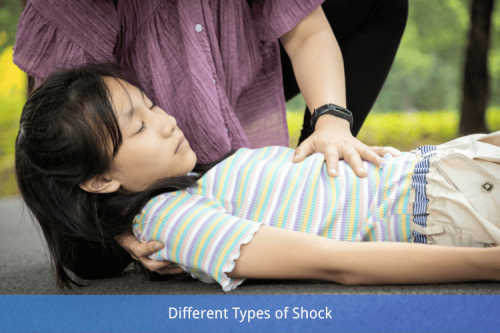
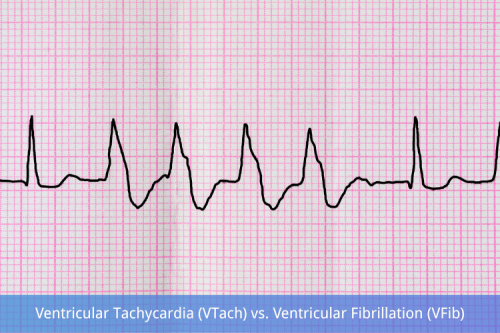
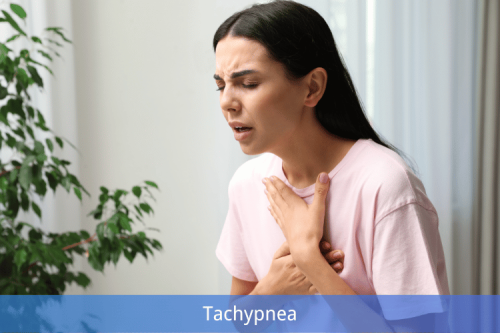
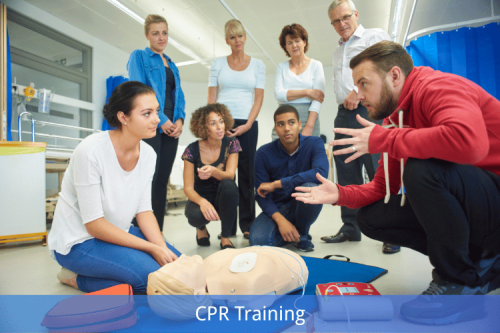
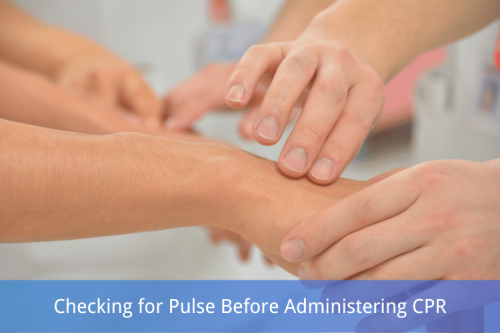
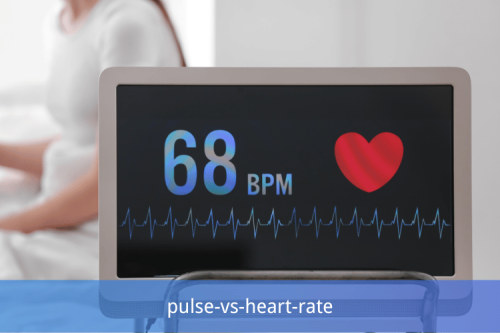
 Login with Google
Login with Google Login with Facebook
Login with Facebook